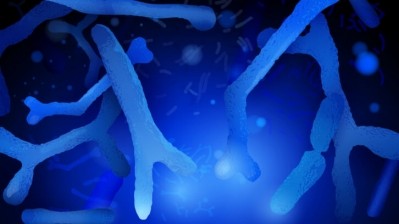Study finds additive and interactive synbiotic effects in obese mice

“In this study, we examined the use of type 2 resistant starch from maize (RS) and L. plantarum NCIMB8826R (LP) as a complementary synbiotic to improve the intestinal and systemic health of diet-induced obese (DIO) mice fed a high-fat diet,” wrote a team of researchers from Prairie View A&M University, Texas and the University of California, Davis.
Published in the journal Nutrition Research, the study was supported by an American Diabetes Association ADA-GSK Award in the Microbiome and Metabolic Changes in Diabetes and Obesity grant. Westchester, IL-based ingredient supplier Ingredion Inc. donated the hi-maize cornstarch.
Exploring the interaction in synbiotic effect
In 2020, an expert panel convened by the International Scientific Association for Probiotics and Prebiotics (ISAPP) defined synbiotics as “a mixture comprising live microorganisms and substrate(s) selectively utilized by host microorganisms that confers a health benefit on the host”. They also distinguished between complementary synbiotics (combined probiotic and prebiotic that act independently) and synergistic synbiotics (where the substrate specifically feeds the microorganisms selected).
The current study noted that relatively little research to date has compared how synbiotic combinations perform relative to probiotics and prebiotics separately, with findings suggesting that synbiotic effects are additive. It countered those previous investigations tested only a few parameters and therefore might have missed synergistic and antagonistic effects.
“Very little is known about how synbiotic combinations affect the capacity of either biotic (probiotic or prebiotic) to improve health in human and animal models of human diseases,” Maria Marco, professor of Food Science and Technology at the University of California, Davis, told NutraIngredients-USA.
As such, the research team set out to compare how the biotics in combination might alter the impact of either substance on the microbiome and modify metabolome, gene expression and protein levels at other body sites.
Study details
The study allocated 40 six-week-old male C57Bl6/J mice (previously fed a high-fat Amioca corn starch diet for nine weeks) to one of four groups: a high-fat diet control group (HF), a prebiotic resistant starch group (RS), a probiotic Lactiplantibacillus plantarum group (LP) and a combination group (RS+LP).
During the six-week study period, the researchers assessed LP viability in fecal samples 24 and 48 hours after each bacterial administration; measured body weight and food intake every other day; and collected urine samples one week prior to sacrificing the mice. Blood samples; epididymal and retroperitoneal adipose tissues; liver and spleen tissues; and ileal, cecal and colonic tissues and contents were then taken for further analysis.
“Combining the prebiotic and probiotic in a synergistic synbiotic approach not only resulted in additive effects on host responses but also there were synergistic or antagonistic interactions that would not have been predicted based the mouse responses to each biotic individually,” said first author Javad Barouei, associate professor in the Department of Agriculture, Nutrition and Human Ecology at Prairie View A&M University.
Based on this expanded understanding of the effects of synbiotic combinations on other biomarkers of intestinal and systemic health, the researchers noted that next steps include exploring the underlying mechanisms and that new synbiotic formulations should be tested using their intended final formulation.
“[O]nce it is understood how exactly these biotics interact with each other, the intestinal mucosa and the gut microbiome, it will be possible to rationally design synbiotics, potentially for individualized nutrition,” said Dr. Marco, adding that diet may be a critical factor explaining non-responders and overall biotic efficacy.
Source: Nutrition Research
“Type 2–resistant starch and Lactiplantibacillus plantarum NCIMB 8826 result in additive and interactive effects in diet-induced obese mice”
doi: doi.org/10.1016/j.nutres.2023.07.003
Authors: Javad Barouei et al.
















